Historical Background
Palestine is it a Country ?
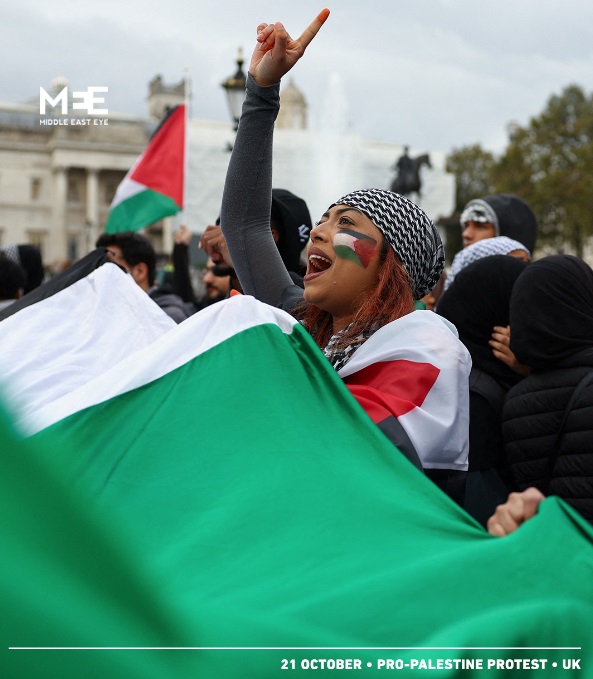
From Middle East Eye facebook page
Is Palestine considered a country or not? This question lies at the core of the Israeli-Palestinian conflict that has persisted for decades. With various global viewpoints and legal interpretations, we’ll explore the complexities surrounding Palestine’s status on the international stage.
Historical Background
Following the disintegration of the Ottoman Empire after World War I, the British assumed control over a significant portion of the Middle East, including the region now comprising modern-day Israel.
In 1936, approximately 17 years later, a rebellion erupted among the Arab population against British rule and their Jewish neighbours. To address the root causes of this violence, the British convened the Peel Commission, which determined that the conflict stemmed from the aspirations of both Jewish and Arab communities to govern the same land.
The Peel Commission recommended a two-state solution, proposing the establishment of two independent states—one for the Jewish population and one for the Arabs. The proposed division heavily favoured the Arab population, with 80 percent of the disputed territory allocated to them and 20 percent to the Jews. Surprisingly, despite the limited size of the territory offered, the Jewish community accepted this proposal. Regrettably, the Arab side rejected it, leading to a resurgence of violence—an instance of rejection, marked as number one.
The UN’s Divisive Decision in 1947
A decade later, in 1947, the British sought assistance from the United Nations to find a resolution to the ongoing tensions. The UN, much like the Peel Commission, determined that dividing the land was the best course of action.
On November 7, 1947, the UN voted to create two separate states. The Jewish population accepted this proposal, yet the Arab side once again rejected it, this time resorting to an all-out war as rejection number two.
The Arab-Israeli Conflict: Shifting Borders and Territories
This conflict involved neighbouring countries such as Jordan, Egypt, Iraq, Lebanon, and Syria. However, Israel emerged victorious and began constructing a new nation. A significant portion of the land designated by the UN for an Arab state, including the West Bank and East Jerusalem, became occupied territory, not by Israel, but by Jordan.
1967 lines, before the 6-days war, from theatlantic.com
Twenty years later, in 1967, the Arab nations, led by Egypt and joined by Syria and Jordan, attempted once more to eliminate the Jewish State. The 1967 conflict, known as the Six Day War, concluded with a remarkable victory for Israel. Jerusalem, the West Bank, and the Gaza Strip came under Israeli control.
The Israeli government was divided over how to handle this new territory. One faction advocated returning the West Bank to Jordan and Gaza to Egypt in exchange for peace, while the other sought to grant it to the local Arab population, increasingly identifying themselves as Palestinians, with the hope of establishing their own state. Unfortunately, neither initiative made significant progress.
Following the disintegration of the Ottoman Empire after World War I, the British assumed control over a significant portion of the Middle East, including the region now comprising modern-day Israel.
In 1936, approximately 17 years later, a rebellion erupted among the Arab population against British rule and their Jewish neighbors. To address the root causes of this violence, the British convened the Peel Commission, which determined that the conflict stemmed from the aspirations of both Jewish and Arab communities to govern the same land.
The Peel Commission recommended a two-state solution, proposing the establishment of two independent states—one for the Jewish population and one for the Arabs. The proposed division heavily favored the Arab population, with 80 percent of the disputed territory allocated to them and 20 percent to the Jews. Surprisingly, despite the limited size of the territory offered, the Jewish community accepted this proposal. Regrettably, the Arab side rejected it, leading to a resurgence of violence—an instance of rejection, marked as number one.
A decade later, in 1947, the British sought assistance from the United Nations to find a resolution to the ongoing tensions. The UN, much like the Peel Commission, determined that dividing the land was the best course of action.
On November 7, 1947, the UN voted to create two separate states. The Jewish population accepted this proposal, yet the Arab side once again rejected it, this time resorting to an all-out war as rejection number two.
The Camp David Summit of 2000
In 2000, Israeli Prime Minister Ehud Barak engaged in talks with Palestinian Liberation Organization Chairman Yasser Arafat at Camp David to negotiate a new two-state plan. Barak offered Arafat a Palestinian state encompassing all of Gaza and 94% of the West Bank, with East Jerusalem as its capital. However, Arafat rejected the offer, leading to a wave of violent suicide bombings that claimed the lives of over 1,000 Israelis and left thousands injured—an unfortunate instance of rejection, counted as number four.
The Ongoing Challenges in the Israeli-Palestinian Conflict
In 2008, Israel made another effort to reach a peaceful resolution. Prime Minister Ehud Olmert went even further than his predecessor, offering additional land to sweeten the deal. Yet, the new Palestinian leader, Mahmoud Abbas, turned down the offer as rejection number five.
During this time, Israel unilaterally withdrew from Gaza, granting the Palestinians full control. Regrettably, instead of developing the territory for the benefit of its citizens, Gaza became a base for terrorism, launching thousands of rockets into Israel.
Israeli disengagement from Gaza, Wikipedia
In summary, each time Israel has endorsed the creation of a Palestinian state, the Palestinian leadership has rejected the offer, sometimes resorting to violence. To achieve peace in the Middle East, it may be essential to focus on encouraging the Palestinian side to acknowledge the existence of a Jewish State, rather than pressuring Israel for another statehood proposal.
Historical Background
Who does Hamas belong to?
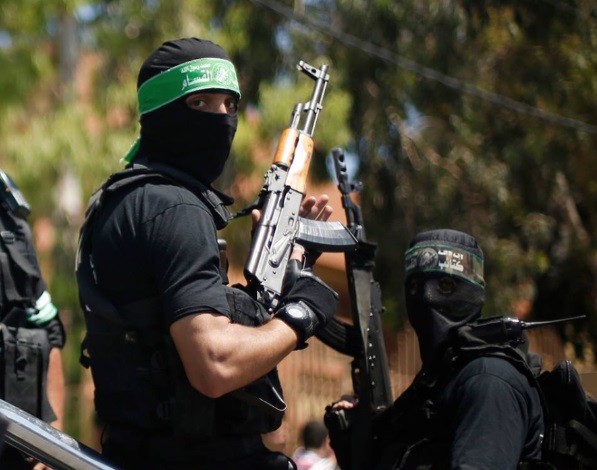
From StandWithUs facebook page
Hamas Origins
So where did Hamas come from? The group grew out of the Palestinian Muslim Brotherhood, which had been active in Gaza since the 1960s through its preaching and social services. The Brotherhood spread its ideology of Islamic revivalism and religious nationalism among Palestinians living in Gaza and the West Bank.
In December 1987, the first Palestinian intifada or uprising against Israeli rule erupted. At the same time, a Palestinian cleric named Sheikh Ahmed Yassin founded Hamas as a resistance movement separate from the secular Palestine Liberation Organization (PLO).
Yassin had been involved with the Brotherhood for years while studying and teaching Islam in Egypt and Gaza. He believed the PLO was ineffective and wanted an alternative Islamist movement to liberate Palestine. Hamas was established to fill this role, with its name meaning “Islamic Resistance Movement” in Arabic.
Hamas’s charter written in 1988 called for the destruction of Israel replacing it with an Islamic state in Palestine. The charter rejected any compromise with Israel, unlike the PLO which had recognized Israel’s right to exist. IN addition, Hamas provides social services to win over people at the grassroots level in Gaza and the West Bank.
In a nutshell, Hamas emerged in the late 1980s during the first intifada as an offshoot of the Palestinian Muslim Brotherhood. It wanted to establish an Islamic state in all of historic Palestine through resistance against Israeli occupation. Hamas founders like Yassin saw the secular PLO as both corrupt and ineffective.
Leadership and structure of Hamas
Hamas has a decentralised leadership structure spread across Gaza, the West Bank, and exile. The group’s overall guidance comes from a Shura Council based overseas. Day-to-day governing in Gaza is handled by a political chief and de facto prime minister.
Ismail Haniyeh has been Hamas’s political leader since 2017, operating mostly from Qatar. Yahya Sinwar oversees Hamas in Gaza as chair of its Political Bureau. He was released from Israeli prison in 2011 after more than 20 years behind bars.
The Izz ad-Din al-Qassam Brigades are Hamas’s military wing, headed by Mohammed Deif. He has survived several Israeli assassination attempts. Regional leaders manage Hamas activities in the West Bank and with the Palestinian diaspora. Iran and Turkey serve as external sponsors and sanctuaries for Hamas.
From Israel Defense Forces facebook page
Ideology and goals
Hamas adheres to a radical Sunni Islamist ideology. Its charter advocates the destruction of Israel and its replacement with an Islamic Palestinian state.
Hamas aims to liberate all of historic Palestine from Israeli occupation. It views violent jihad against Israel as a religious duty and endorses suicide bombings and rocket attacks against Israeli civilians. Hamas provides social services to build grassroots support in Gaza and the West Bank as part of its resistance strategy.
Relations with the PLO and Fatah
Hamas has an adversarial relationship with the secular PLO, which it views as corrupt and ineffective. It defeated Fatah, the PLO’s largest faction, in the 2006 Palestinian legislative elections. Clashes led to Hamas seizing control of Gaza in 2007, splitting the Palestinian leadership.
Despite animosity between the two groups, Hamas and Fatah reached reconciliation agreements in 2011, 2012 and 2014 to form unity governments. However, tensions remain high, and national elections have been indefinitely delayed since 2006. Hamas accuses Fatah of colluding with Israel against Palestinian interests.
Fatah symbol, Wikipedia
Hamas is a designated terrorist group
The United States designated Hamas as a terrorist organisation in 1997 due to its use of violence against Israeli civilians and soldiers. The European Union, Canada, Japan and Israel also designate Hamas as a terrorist group, differentiating it from the PLO.
Hamas rejects its terrorist label, casting its actions as legitimate resistance against Israeli occupation. It views negotiations as futile based on the collapse of the Oslo peace process in the 1990s. Hamas insists it has the right to maintain an armed struggle alongside participation in politics.
In summary, Hamas emerged in the late 1980s as an offshoot of the Muslim Brotherhood in Palestine. It maintains a complex leadership structure both within Gaza and the West Bank as well as abroad. Hamas blends nationalism with Islamist ideology in pursuing its resistance agenda against Israel. Though designated a terrorist group by many countries, Hamas has entrenched itself as a major Palestinian political faction.
Historical Background
Understanding the Hamas Charter and Article 13
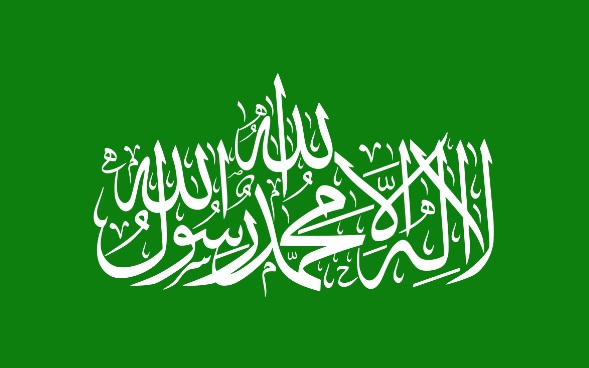
Flag of Hamas
The Hamas Charter is a significant document that outlines the core principles, goals, and ideology of the Palestinian extremist organization known as Hamas. We will provide insight into its history, the Charter’s key elements, and its controversial Article 13.
What is the Hamas Charter?
The Hamas Charter, also known as the Covenant of the Islamic Resistance Movement, is a foundational document that outlines the goals, principles, and strategies of Hamas. It was first published in 1988 and has since played a pivotal role in shaping the organization’s path. Hamas, an acronym for Harakat al-Muqawama al-Islamiyya (Islamic Resistance Movement), is a Palestinian political and extremist military organization that emerged during the first intifada against Israeli rule in the late 1980s. Hamas is designated as a terrorist organization by the United States, Canada, the European Union, and Israel.
The Origins and Objectives
Hamas was established as an offshoot of the Muslim Brotherhood, aiming to resist Israeli occupation and assert Palestinian rights. The Charter reflects this foundation, emphasizing the importance of Islamic values and the belief that Palestine is an Islamic Waqf (endowment) that cannot be relinquished. It also sets forth the organization’s goal of establishing an Islamic state, free of Jews, on Palestinian lands and modern-day Israel, through armed struggle and fight – “from the river to the sea”, which means from the Jordan River to the Mediterranean Sea.
Key Tenets
The Charter includes several fundamental principles that form the core of Hamas’ ideology and guide its actions. These include a rejection of any compromise with or recognition of Israel, a commitment to armed resistance, and the belief in the eventual victory of Islam over Zionism. It also rejects any negotiation and views agreements like the Oslo Accords and other peace efforts as harmful to the Palestinian cause.
From Michael Dickson Twitter profile
The Controversy Surrounding Article 13
One of the most contentious elements of the Hamas Charter is Article 13, which deals with the idea of a global Jewish conspiracy. This article has stirred significant debate and criticism, both within and outside of the Palestinian territories.
The Content of Article 13
Article 13 of the Hamas Charter asserts that the global Zionist movement controls the world’s media, finances, and politics. It claims this conspiracy is the driving force behind international events, including both World Wars. It goes on to state that Jews used their influence to secure the Balfour Declaration and establish the State of Israel. This article also alleges that Freemasonry and other secret societies are tools of Zionist control.
Criticism and Accusations
Article 13 of the Hamas Charter has been widely criticized for promoting anti-Semitic conspiracy theories. Critics argue that it perpetuates harmful stereotypes and promotes hatred towards Jewish people. Such allegations have been a significant point of contention, as they undermine efforts to engage in productive dialogue and negotiations in the Israeli-Palestinian conflict.
Hamas’s Response
Hamas leaders have, at times, attempted to distance themselves from Article 13, asserting that it should be viewed in a historical context. They claim that it reflects the perceptions of the period when the Charter was written and does not necessarily represent the organization’s current stance. However, the continued presence of Article 13 in the Charter has led many to question the organization’s true beliefs and intentions.
The Impact of the Hamas Charter
The Hamas Charter has had a lasting impact on the Israeli-Palestinian conflict. Its uncompromising stance towards Israel and the use of violence as a means of resistance have been central to Hamas’ identity. This intractability has both attracted support among those who share these views and generated criticism from those who believe it obstructs the path to a peaceful resolution.
Conclusion
The Hamas Charter, with its controversial Article 13, provides insight into the organization’s origins, objectives, and ideology. As the Israeli-Palestinian conflict persists, the role of the Hamas Charter remains a subject of debate, reflection, and concern.
Historical Background
Why is the Gaza Strip so important?
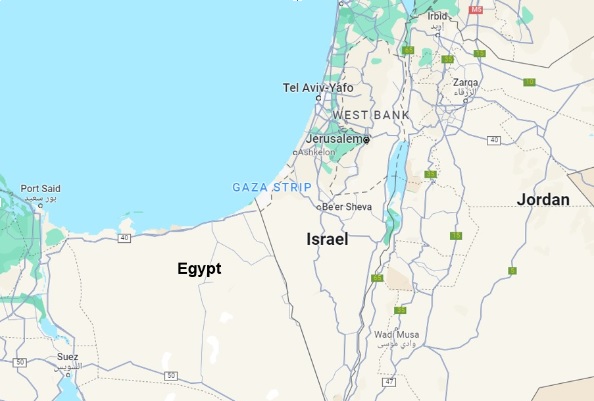
The Gaza Strip is a small but densely populated coastal enclave located between Israel and Egypt. Despite its modest size, it has played an outsized role in the Arab-Israeli conflict for over 70 years. Here are some of the reasons why this tiny territory is so important.
Strategic Location
Situated on the Mediterranean coast between Israel and Egypt, the Gaza Strip has immense strategic value. It provides access to the sea and borders two of Israel’s most powerful neighbors. Control over Gaza has been seen as necessary for Israel’s security against attacks from the west. This helps explain the ferocity with which Israel has fought to prevent Gaza from being used as a base for terrorism.
Symbol of Palestinian Statehood
The Gaza Strip, alongside the West Bank, is considered by many Palestinians to be part of their future state. It is viewed as an inseparable part of the Palestinian homeland. Losing Gaza would undermine dreams of an independent Palestine. This gives the territory great symbolic significance. Hamas and other factions vow never to surrender Gaza because that would be tantamount to surrendering their national aspirations.
Hamas Stronghold
Since its takeover in 2007, the Gaza Strip has been controlled by Hamas, an Islamist militant group hostile to Israel’s existence. Gaza serves as a base for Hamas to launch rockets, dig attack tunnels and foment terrorism against Israel. By retaining power over Gaza’s population and resources, Hamas can continue to challenge Israel and derail peace efforts. Israeli leaders view Gaza as a grave threat as long as Hamas rules the territory.
Humanitarian Crisis
The Gaza Strip’s borders and economy have been severely restricted by an Israeli-Egyptian blockade imposed after Hamas seized power. Poverty, unemployment and aid dependency are rampant. Public services like power, water and healthcare are inadequate. These conditions and lack of hope fuel anger against Israel. The humanitarian crisis makes the Gaza Strip a powder keg that could help spark wider conflict.
Engine of Violence
Gaza’s militant groups, notably Hamas and Palestinian Islamic Jihad, have launched thousands of rockets, mortars and terror attacks from the territory against Israeli civilians. Israel has blockaded and launched multiple large-scale military offensives in Gaza to try curbing the violence. But the hostilities have only bred more extremism. The Gaza Strip has been the engine driving the conflict’s escalation over the last 15 years. Ending Gaza’s role as a terror haven is considered essential for peace.
No Easy Solutions
Discussion about Gaza usually focuses on security or humanitarian concerns. But after decades of war, terrorist control over the strip, and failed peace efforts, there are no simple solutions. Granting Gaza independence would allow terrorists to create a hostile state. Reoccupying Gaza could ignite an uncontrollable backlash. Easing the blockade risks more violence. Creative solutions are needed that address Gaza’s status and suffering in a way all parties can accept. Until then, the Gaza Strip will likely remain a flashpoint threatening wider war.
Battleground of Competing Visions
For Israel, control over Gaza provides strategic depth against threats from the southwest. It prevents terror groups from easily targeting cities like Ashkelon and creates a buffer zone against invasion from Egypt’s Sinai Peninsula.
Hamas views retaining Gaza as vital to promote its vision of armed resistance, gain legitimacy through governance and prevent the Fatah-led Palestinian Authority from regaining control there.
The tiny Gaza Strip may be just 25 miles long and 7 miles wide. But it occupies an outsized role in the Israeli-Palestinian conflict due to its strategic location, symbolic significance, humanitarian crisis and propensity for violence. This helps explain why such a small territory has commanded so much of the world’s anxious attention over the decades. For the foreseeable future, finding a just and lasting solution for the Gaza Strip will remain one of the thorniest challenges on the road to Middle East peace.
-
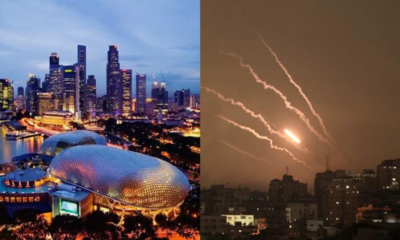
 News4 months ago
News4 months agoGaza could Have Been Singapore. Hamas Turned It Into a living nightmare
-

 News4 months ago
News4 months agoRape, slaughter, and atrocities—see the real face of Hamas
-

 News4 months ago
News4 months agoShe died while saving lives.
-

 News4 months ago
News4 months agoTrigger warning: This is the atrocity that’s happening in Israel right now
-

 News4 months ago
News4 months agoMonsters: Yahya Sinwar and Hamas kidnapped 150+ children and women.
-

 News4 months ago
News4 months agoKidnapping elderly and children: Hamas are no heroes
-

 Hamas War Strategy, Tactics, and PR4 months ago
Hamas War Strategy, Tactics, and PR4 months agoThe War Crimes of Hamas and ISIS in Exploiting Civilians
-

 News4 months ago
News4 months agoHamas turns a music festival into a massacre






